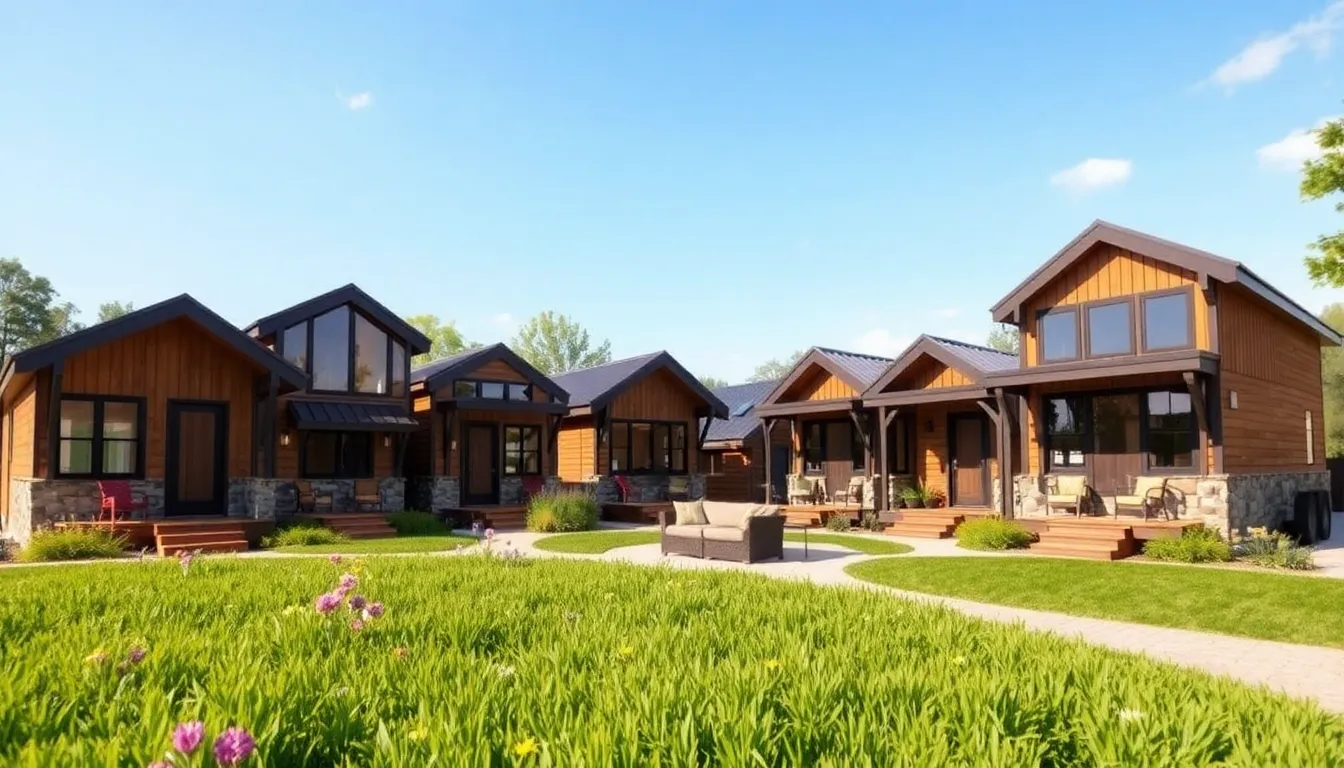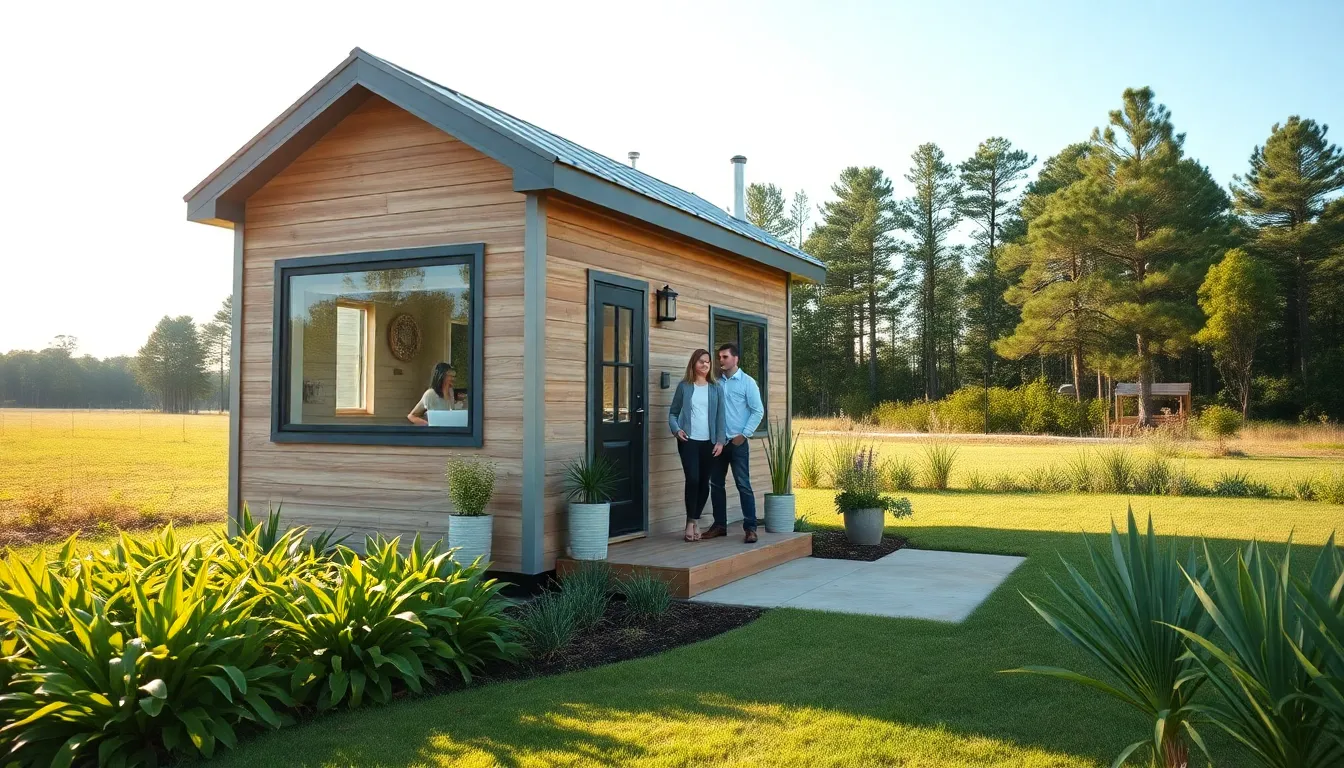Imagine stepping outside your door and into a world where fresh air and friendly faces await. Community walking paths aren’t just trails; they’re the secret sauce to a happier, healthier life. These winding routes invite everyone—from the serious jogger to the leisurely stroller—to lace up their shoes and soak in the sights and sounds of their neighborhood.
Not only do these paths promote fitness, but they also foster connections. Who knew that a simple stroll could lead to new friendships or even the next big neighborhood gossip? So grab your favorite walking buddy (or that adorable dog) and discover why these paths are the unsung heroes of community life. With each step, you’ll find a blend of exercise, laughter, and a sprinkle of adventure waiting just outside your door.
Table of Contents
ToggleOverview of Community Walking Paths
Community walking paths serve as vital connectors within neighborhoods. These paths provide safe routes for residents to engage in physical activity. Jogging, walking, or strolling creates opportunities for exercise. Green spaces alongside these paths enhance the experience.
Walking paths cater to diverse users. Families with strollers, pet owners, and fitness enthusiasts all utilize these pathways. Design elements, such as proper lighting and signage, improve accessibility and user safety. Frequent maintenance ensures these paths remain inviting and enjoyable.
Social interaction flourishes along community walking paths. Neighbors meet, chat, and foster friendships during their walks. Such interactions contribute to a sense of belonging. Community events, like organized walks or clean-up days, amplify this connection.
Health benefits linked to walking paths abound. Regular walking reduces risks of chronic diseases. Improved mental health often results from consistent physical activity. One study showed that communities with better access to walking paths experienced lower obesity rates.
Economic benefits also arise from investing in walking paths. Property values in areas with accessible paths tend to increase. Walkable neighborhoods attract more potential buyers. Local businesses benefit from increased foot traffic along these routes.
Community walking paths not only promote physical fitness and mental well-being. They enhance social bonds and drive economic growth. Prioritizing these paths leads to happier, healthier communities.
Benefits of Community Walking Paths
Community walking paths offer numerous benefits that enhance both individual well-being and social cohesion.
Health Benefits
Walking paths significantly contribute to physical health. Engaging in regular walking reduces the risks of chronic diseases, including heart disease and diabetes. Participants enjoy improved cardiovascular fitness, increased muscle strength, and better flexibility. Mental health also benefits; walking triggers the release of endorphins, which alleviate stress and anxiety. Access to safe walking routes encourages consistent physical activity, promoting a more active lifestyle for families and individuals. Maintaining a routine can lead to weight management and overall physical improvement.
Social Benefits
Community walking paths foster vital social connections. Residents often meet and interact while walking, thus building friendships and strengthening community bonds. Activities like group walks or fitness classes promote engagement. Families can enjoy quality time together on these paths, reinforcing family ties. Organizing community events along walking routes creates a sense of belonging and encourages participation among neighbors. Local businesses benefit as foot traffic increases, leading to greater community interaction. Ultimately, these paths enhance socialization and create a supportive atmosphere.
Design and Accessibility Considerations
Community walking paths must prioritize design and accessibility to ensure usability for all residents. Proper dimensions and surface materials significantly enhance the experience of users.
Width and Surface Material
Walking paths should maintain a width of at least 5 feet. This dimension accommodates two people walking side by side and allows space for strollers and wheelchairs. Surface material plays a crucial role in comfort and safety. Popular options include asphalt, concrete, and compacted gravel, each offering unique benefits. Asphalt provides a smooth surface that is easy on joints. Concrete, while durable, requires careful attention to prevent cracking. Compacted gravel offers a more natural look, but may require maintenance to remain level.
Safety Features
Incorporating safety features increases the usability of walking paths. Well-placed lighting not only enhances visibility at night but also deters crime. Signage allows users to easily navigate routes and understand path rules. Adding handrails in steeper areas ensures stability and support. Proper drainage systems prevent water accumulation, reducing hazards associated with slippery conditions. Regular maintenance checks also play an important role in keeping paths safe and appealing for all users.
Examples of Successful Community Walking Paths
Community walking paths demonstrate transformative potential in various settings, enhancing lifestyle quality and community connection.
Case Study 1: Urban Implementation
In urban areas, cities like San Francisco showcase successful community walking paths. The Embarcadero waterfront path, spanning over 3 miles, encourages residents to walk, jog, or cycle. Accessibility features, including wide pathways and safety lighting, foster a welcoming environment. City planners integrated park spaces along the route, promoting both physical activity and social interaction. Community events regularly take place, further strengthening neighborhood ties. Property values along the Embarcadero have significantly increased, reflecting the economic benefits associated with these paths.
Case Study 2: Rural Initiatives
Rural towns also benefit from community walking paths, as seen in the town of Hico, Texas. The Hico Walking Trail connects residents to key community spots, covering approximately 2 miles. Natural landscaping enhances the path’s appeal, providing a scenic backdrop for walkers. Local volunteers frequently maintain the trail, ensuring its cleanliness and safety. Health statistics indicate that walking trail users report lower stress levels and improved physical fitness. Additionally, the trail serves as a venue for community events, encouraging social engagement among residents.
Conclusion
Community walking paths are invaluable assets that enrich neighborhoods and promote healthier lifestyles. They provide safe and accessible routes for individuals of all ages and abilities to enjoy physical activity while fostering connections among residents.
As these paths encourage social interactions and community events, they create a sense of belonging that extends beyond mere exercise. The positive health impacts and economic benefits further underscore their importance in enhancing community life.
Investing in well-designed walking paths not only improves the quality of life for residents but also strengthens the fabric of the community. With continued support and maintenance, these paths can lead to happier, healthier neighborhoods for everyone.







